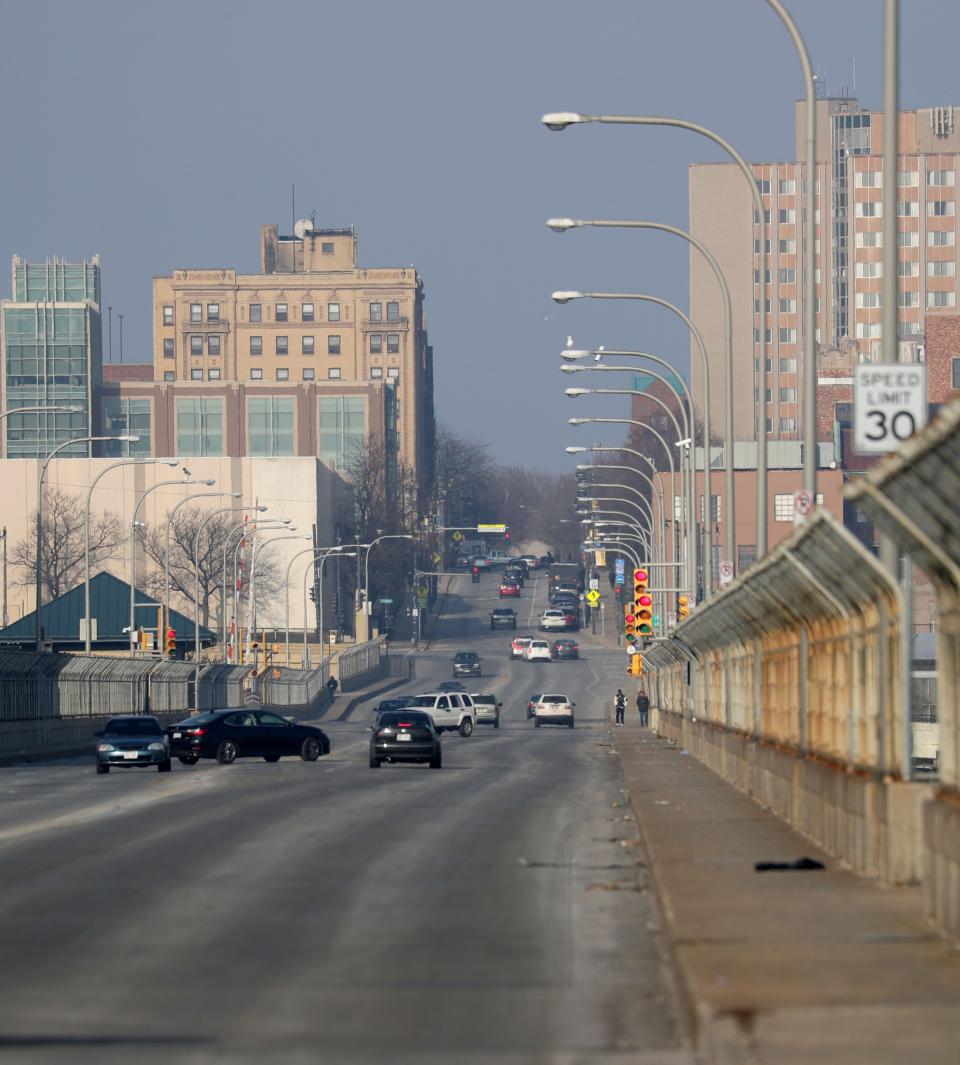The history of Milwaukee's 16th Street Viaduct
At first glance, the 16th Street Viaduct is simply a 400-foot bridge crossing Milwaukee’s Menomonee River.
But it’s also been known as the “longest bridge in the world” and the “Mason-Dixon Line” of Milwaukee and holds a key place in Milwaukee’s history. In the 1960s, it connected Milwaukee’s largely Black neighborhoods on the north side with the formerly overwhelmingly white population on the south.
On Aug. 28, 1967, roughly 200 NAACP Youth Council members, led by Father James E. Groppi, and other demonstrators marched across the bridge to the south side’s Kosciuszko Park in protest of the city’s lack of an open-housing ordinance.

Thousands of onlookers and counterprotesters harassed the marchers on their route. The following night, marchers headed to Kosciuszko Park and were met by counterprotesters once again, who hurled eggs, bottles, rocks, firecrackers and beer cans.
These two marches across the viaduct sparked hundreds of additional protests over the course of more than 200 days in the Milwaukee area demanding open housing legislation.
In December 1967, an open housing ordinance was enacted by the City of Milwaukee, which only covered about 25% of the residential properties in the city. A more substantial and wider-reaching ordinance was enacted in late April 1968, after the federal open housing law was enacted.
More than two decades later, on Aug. 21, 1988, the 16th Street Viaduct was renamed the James E. Groppi Unity Bridge.
See the rest of Milwaukee's 100 objects
This article originally appeared on Milwaukee Journal Sentinel: The history of Milwaukee's 16th Street Viaduct

